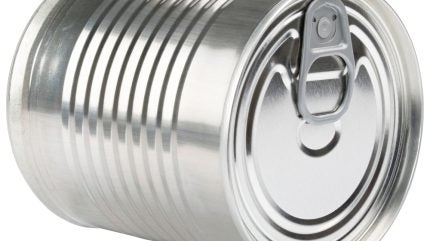
Cans for food, drinks, and household products may look like bare metal, yet what keeps them safe and effective is often invisible.
Inside each can lies a thin protective layer — the can coating — designed to stop corrosion, preserve taste, and keep contents safe.

Discover B2B Marketing That Performs
Combine business intelligence and editorial excellence to reach engaged professionals across 36 leading media platforms.
Without these linings, cans would quickly deteriorate and food quality would suffer.
Why coatings are essential
A can is more than just a container. When filled with acidic tomatoes, carbonated drinks, or salty fish, plain metal would corrode, leach, or alter the flavour. Can coatings provide a barrier that meets several critical requirements:
- Corrosion protection to keep metal intact and prevent rust
- Food safety by ensuring no harmful chemicals migrate into the contents
- Durability to withstand sterilisation, pasteurisation, and handling
- Flexibility and adhesion to remain effective even if the can is dented
- Recyclability so coatings can be removed or burned off during metal recovery
These coatings are often only micrometres thick but must perform reliably throughout a product’s shelf life — sometimes years.
Common types of can coatings
The science behind can linings has evolved for more than a century. Several main coating types are used today, each with strengths and drawbacks.

US Tariffs are shifting - will you react or anticipate?
Don’t let policy changes catch you off guard. Stay proactive with real-time data and expert analysis.
By GlobalDataEpoxy coatings
Long regarded as the industry standard, epoxy resins — particularly those based on bisphenol A (BPA) — offer excellent adhesion and resistance to acids and heat. However, concerns about BPA migration and its potential health risks have accelerated the search for safer alternatives.
Polyester and acrylic coatings
BPA-free resins such as polyesters and acrylics are gaining ground. They are safer but often costlier, and sometimes less durable under extreme processing conditions.
Vinyl, oleoresin, and conversion coatings
Earlier generations of coatings, including natural oleoresins and vinyl blends, are still used in certain cases but are limited by lower corrosion resistance and stability. Conversion coatings like phosphate layers are often applied beneath other coatings to improve adhesion and performance.
Emerging solutions
Next-generation technologies include non-BPA epoxy systems, polyolefin linings, sol-gel barriers, and nanocomposite coatings. These innovations aim to combine safety, durability, and recyclability, though challenges remain in cost and long-term testing.
Regulation and future trends
Food safety laws
Regulatory bodies worldwide closely monitor can coatings. In the European Union, coatings must comply with Regulation (EC) 1935/2004, ensuring that no harmful substances migrate into food. Similar standards apply in North America and Asia, driving continuous testing and reformulation.
Market direction
Demand for canned foods and beverages continues to rise, particularly in emerging economies, keeping the global can coatings market strong. At the same time, consumer preference for BPA-free and eco-friendly packaging is pushing manufacturers towards innovative, sustainable options.
Ongoing challenges
- Ensuring new materials match the performance of epoxy resins
- Controlling potential migration of minor by-products
- Reducing costs for wider adoption
- Meeting recyclability goals without compromising protection
Outlook
The future points to hybrid systems, layered coatings, and advanced chemistries designed to balance safety, strength, and sustainability.
As innovation continues, consumers can expect cans that are safer, longer lasting, and more environmentally responsible — without sacrificing taste or shelf life.
Can coatings may be invisible, but they play an indispensable role in modern packaging.
By protecting both the can and its contents, they help ensure that one of the world’s most widely used packaging formats remains reliable, safe, and sustainable well into the future.





